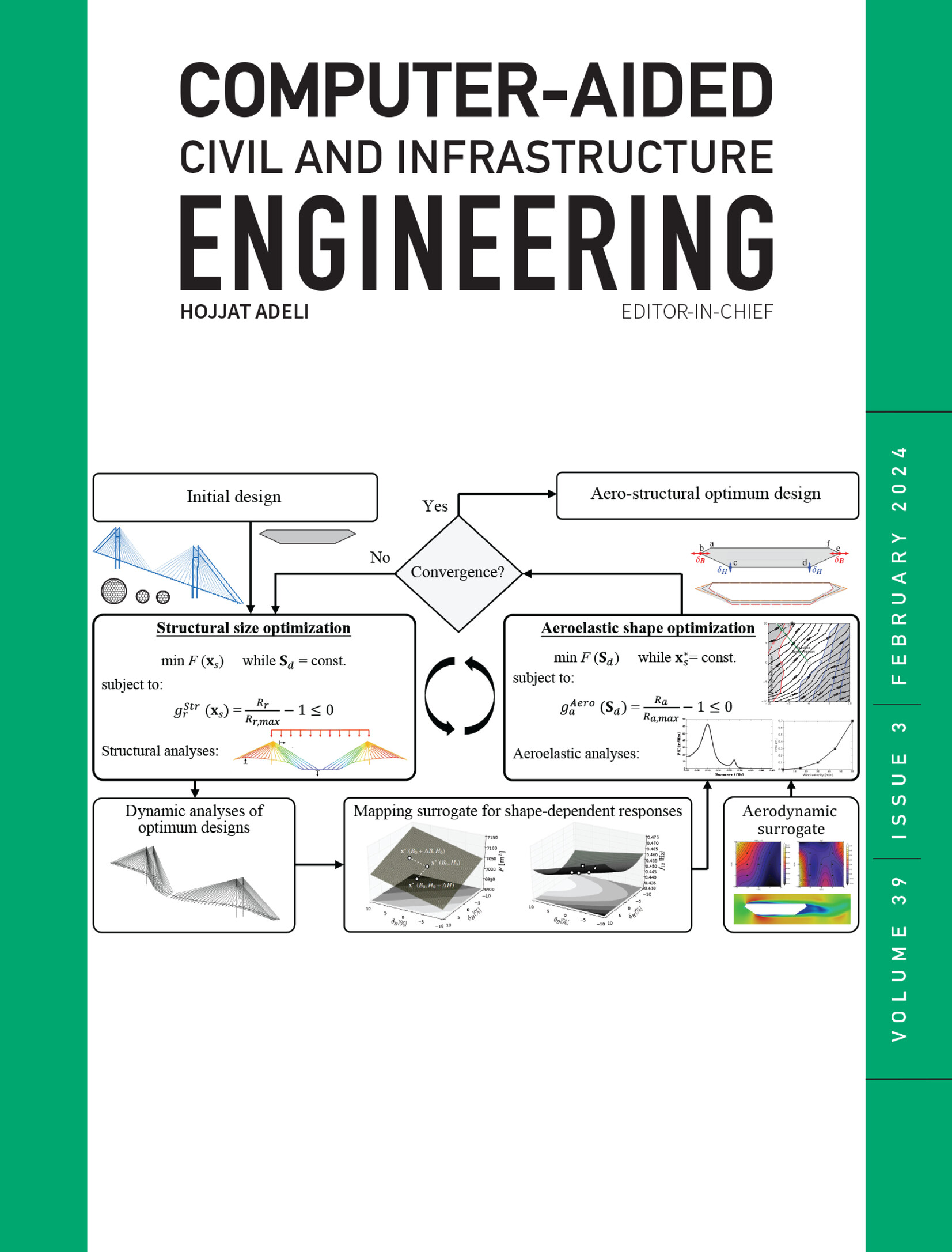考虑耦合地质因素的隧道掘进机干扰风险管理的数据增强机器学习
IF 9.1
1区 工程技术
Q1 COMPUTER SCIENCE, INTERDISCIPLINARY APPLICATIONS
引用次数: 0
摘要
有效地管理隧道掘进机的卡纸是确保安全、减少施工停工的关键。然而,以前的研究主要集中在基于数值数据集的预测建模上,很少考虑基于现场的地质条件,对干扰现象的基本机制也没有充分的研究。该研究利用随机森林和极端梯度增强两种集成学习算法,基于39个隧道工程的现场数据集来预测隧道掘进机的干扰。采用数据增强技术构建扩展数据集。与没有数据增强的模型相比,在增强数据集上训练的预测模型对TBM干扰的检测能力有所提高。成功表征了其干扰机理,揭示了地质因素的个体影响及其复杂的相互作用。正确和不正确预测之间预测不确定性的明显差异支持了模型的可靠性。最后,结合概率阈值预测模型,提出了一套实用的风险管理系统,并通过现场应用进行了验证。本文章由计算机程序翻译,如有差异,请以英文原文为准。
Data‐augmented machine learning for risk management of tunnel boring machine jamming considering coupled geological factors
Effective management of tunnel boring machine (TBM) jamming is crucial for ensuring safety and mitigating construction downtime. However, previous studies have primarily focused on predictive modeling based on numerical datasets, with limited consideration of field‐based geological conditions and inadequate investigation of the fundamental mechanisms underlying jamming phenomena. This study utilized two ensemble learning algorithms, Random Forest and Extreme Gradient Boosting, to predict TBM jamming based on a field dataset from 39 tunneling projects. A data augmentation technique was employed to construct an expanded dataset. The predictive model trained on the augmented dataset demonstrated improved detection of TBM jamming compared to the model developed without data augmentation. The jamming mechanism was successfully characterized, revealing the individual effects of geological factors and their complex interactions. A distinct difference in predictive uncertainty between correct and incorrect predictions supports the model's reliability. Finally, a practical risk management system was proposed by incorporating the predictive model with probability thresholds and validated through field application.
求助全文
通过发布文献求助,成功后即可免费获取论文全文。
去求助
来源期刊
CiteScore
17.60
自引率
19.80%
发文量
146
审稿时长
1 months
期刊介绍:
Computer-Aided Civil and Infrastructure Engineering stands as a scholarly, peer-reviewed archival journal, serving as a vital link between advancements in computer technology and civil and infrastructure engineering. The journal serves as a distinctive platform for the publication of original articles, spotlighting novel computational techniques and inventive applications of computers. Specifically, it concentrates on recent progress in computer and information technologies, fostering the development and application of emerging computing paradigms.
Encompassing a broad scope, the journal addresses bridge, construction, environmental, highway, geotechnical, structural, transportation, and water resources engineering. It extends its reach to the management of infrastructure systems, covering domains such as highways, bridges, pavements, airports, and utilities. The journal delves into areas like artificial intelligence, cognitive modeling, concurrent engineering, database management, distributed computing, evolutionary computing, fuzzy logic, genetic algorithms, geometric modeling, internet-based technologies, knowledge discovery and engineering, machine learning, mobile computing, multimedia technologies, networking, neural network computing, optimization and search, parallel processing, robotics, smart structures, software engineering, virtual reality, and visualization techniques.

 求助内容:
求助内容: 应助结果提醒方式:
应助结果提醒方式:


